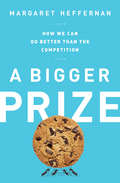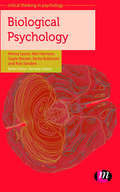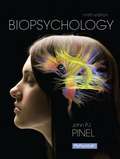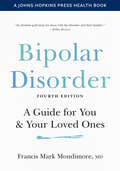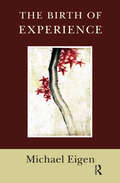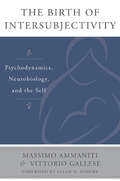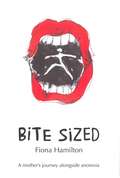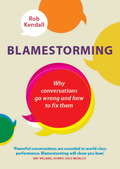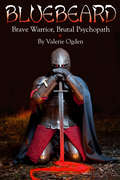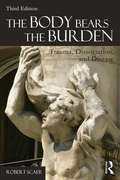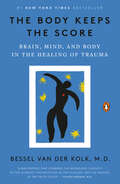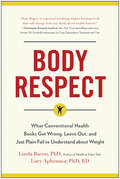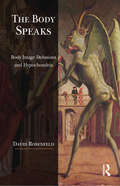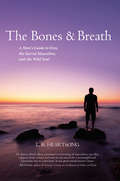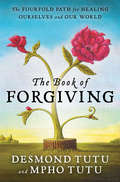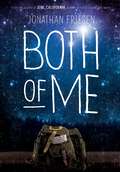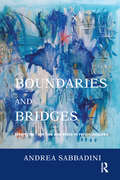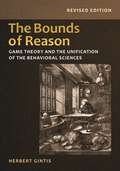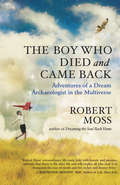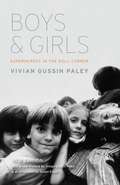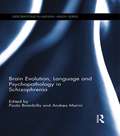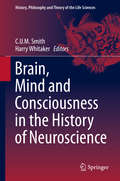- Table View
- List View
A Bigger Prize: How We Can Do Better than the Competition
by Margaret HeffernanGet into the best schools. Land your next big promotion. Dress for success. Run faster. Play tougher. Work harder. Keep score. And whatever you do?make sure you win. Competition runs through every aspect of our lives today. From the cubicle to the race track, in business and love, religion and science, what matters now is to be the biggest, fastest, meanest, toughest, richest. The upshot of all these contests? As Margaret Heffernan shows in this eye-opening book, competition regularly backfires, producing an explosion of cheating, corruption, inequality, and risk. The demolition derby of modern life has damaged our ability to work together. But it doesnOCOt have to be this way. CEOs, scientists, engineers, investors, and inventors around the world are pioneering better ways to create great products, build enduring businesses, and grow relationships. Their secret? Generosity. Trust. Time. Theater. From the cranberry bogs of Massachusetts to the classrooms of Singapore and Finland, from tiny start-ups to global engineering firms and beloved American organizations?like Ocean Spray, Eileen Fisher, Gore, and Boston Scientific?Heffernan discovers ways of living and working that foster creativity, spark innovation, reinforce our social fabric, and feel so much better than winning. "
The Bilingual Mind
by Aneta PavlenkoIf languages influence the way we think, do bilinguals think differently in their respective languages? And if languages do not affect thought, why do bilinguals often perceive such influence? For many years these questions remained unanswered because the research on language and thought had focused solely on the monolingual mind. Bilinguals were either excluded from this research as 'unusual' or 'messy' subjects, or treated as representative speakers of their first languages. Only recently did bi- and multilinguals become research participants in their own right. Pavlenko considers the socio-political circumstances that led to the monolingual status quo and shows how the invisibility of bilingual participants compromised the validity and reliability of findings in the study of language and cognition. She then shifts attention to the bilingual turn in the field and examines its contributions to the understanding of the human mind.
Biological Psychology: Learning Through Assessment (Critical Thinking in Psychology Series)
by Minna Lyons Sarita Robinson Neil Harrison Gayle Brewer Dr Robert L. SandersThis accessible introductory text addresses the core knowledge domain of biological psychology, with focused coverage of the central concepts, research and debates in this key area. Biological Psychology outlines the importance and purpose of the biological approach and contextualises it with other perspectives in psychology, emphasizing the interaction between biology and the environment. Learning features including case studies, review questions and assignments are provided to aid students' understanding and promote a critical approach. Extended critical thinking and skill-builder activities develop the reader's higher-level academic skills.
Biopsychology
by John P. J. PinelDelves into how the central nervous system governs behavior Biopsychology, 9/e, introduces the study of the biology of behavior; that is, the neural mechanisms of psychological processes in the central nervous system. This program combines biopsychogical science and student-oriented discussion, interweaving the basics of this specialized field with clinical case studies and exploring the personal and social implications that arise. The author encourages interactive learning and creative thinking. His clear and engaging presentation makes the material personally and socially relevant to readers.
Bipolar Disorder: A Guide for You and Your Loved Ones (A Johns Hopkins Press Health Book)
by Francis Mark MondimoreThe vital resource for people with bipolar disorder and their loved ones, completely updated.Compassionate and comprehensive, Dr. Francis Mondimore's pathbreaking guide has helped thousands of people and their loved ones cope with bipolar disorder. Now in its fourth edition, Bipolar Disorder has been totally revised and reorganized to reflect dramatic improvements in the treatment of the illness, as well as numerous scientific breakthroughs that have increased our understanding of its causes. With insight and sensitivity, Dr. Mondimore • surveys new medications for treating bipolar disorder, including ketamine, exploring the benefits and potential side effects • reviews the scientific studies that back up claims for recommended botanicals and nutritional supplements, such as omega-3s and NAC, and tells you which ones to leave on the shelf• expands the chapter on brain stimulation treatments to include new transcranial magnetic stimulation (TMS) devices and techniques such as "deep TMS" and "theta-burst TMS," as well as new details about vagal nerve stimulation• describes the emerging field of pharmacogenomics: the science of using a patient's genetic profile to improve the selection and dosing of medications• examines the important relationship between bipolar disorder and borderline personality disorder while discussing why one or the other diagnosis is often overlooked in persons who have both• lays out recommended lifestyle changes and practical approaches to managing the illness better, planning for emergencies, building a support system, dealing with insurance and legal issues, and defining the role of the familyA section called "What Causes Bipolar Disorder" has been added to this new edition. Dr. Mondimore also discusses the role that talk therapy, including specialized forms of cognitive behavioral therapy and family-focused therapy, can play in managing the disorder. Throughout the book, Dr. Mondimore has added sidebars on fascinating details about the history of this disorder and its treatment.
The Birth of Experience
by Michael EigenThis book emphasises on Kabbalah and psychoanalysis and the two domains intertwining almost seamlessly. It focuses on birth processes at different ages and situations, exploring in detail how psychoanalysis interweaves with themes from life, clinical work, and Kabbalah.
The Birth of Intersubjectivity: Psychodynamics, Neurobiology, and the Self
by Massimo Ammaniti Vittorio GalleseNeurobiological research helps explain the experience of motherhood. This book, the exciting collaboration of a developmental psychoanalyst at the forefront of functional magnetic resonance attachment research and a leading neurobiological researcher on mirror neurons, presents a fresh and innovative look at intersubjectivity from a neurobiological and developmental perspective. Grounding their analysis of intersubjectivity in the newest advances from developmental neuroscience, modern attachment theory, and relational psychoanalysis, Massimo Ammaniti and Vittorio Gallese illustrate how brain development changes simultaneously with relationally induced alterations in the subjectivities of both mother and infant. Ammaniti and Gallese combine extensive current interdisciplinary research with in-depth clinical interviews that highlight the expectant mother's changing subjective states and the various typologies of maternal representations. Building on Gallese's seminal work with mirror neurons and embodied simulation theory, the authors construct a model of intersubjectivity that stresses not symbolic representations but intercorporeality from a second-person perspective. Charting the prenatal and perinatal events that serve as the neurobiological foundation for postnatal reciprocal affective communications, they conclude with direct clinical applications of early assessments and interventions, including interventions with pregnant mothers. This volume is essential for clinicians specializing in attachment disorders and relational trauma, child psychotherapists, infant mental health workers, pediatricians, psychoanalysts, and developmental researchers. It combines fascinating new information and illustrative clinical experience to illustrate the early intersubjective origins of our own and our patients' internal worlds.
Bite Sized: A mother's journey alongside anorexia
by Fiona HamiltonA stark and compelling account of a mother's experience of her daughter's anorexia. With striking illustrations, this is an honest and vulnerable insight into an illness which unravels individuals and families and pushes us to our limits.
Blamestorming
by Rob KendallWinner of the 2015 COVR Award for Best Self-Help Book!Blamestorming outlines the reasons why our daily conversations go wrong, explains how to respond when they do and provides tips on how to stop them going wrong in the first place. Based on his experience as a highly respected communications coach for international companies and business professionals, Rob Kendall provides a practical guide to achieving more rewarding and effective interactions with everyone in your life - from your boss to your partner. Rob's techniques have been proven to be effective for thousands of people from all walks of life and are presented in an illustrated step-by-step format that makes them easy to put into practice from Day One. Underpinning the book's approach to consistently having better interactions is an explanation of the warning signals that indicate when a conversation is going off track.From the Trade Paperback edition.
Blamestorming
by Rob KendallWinner of the 2015 COVR Award for Best Self-Help Book!Blamestorming outlines the reasons why our daily conversations go wrong, explains how to respond when they do and provides tips on how to stop them going wrong in the first place. Based on his experience as a highly respected communications coach for international companies and business professionals, Rob Kendall provides a practical guide to achieving more rewarding and effective interactions with everyone in your life - from your boss to your partner. Rob's techniques have been proven to be effective for thousands of people from all walks of life and are presented in an illustrated step-by-step format that makes them easy to put into practice from Day One. Underpinning the book's approach to consistently having better interactions is an explanation of the warning signals that indicate when a conversation is going off track.From the Trade Paperback edition.
Blamestorming
by Rob KendallBlamestorming outlines the reasons why our daily conversations go wrong, explains how to respond when they do and provides tips on how to stop them going wrong in the first place. Based on his experience as a highly respected communications coach for international companies and business professionals, Rob Kendall provides a practical guide to achieving more rewarding and effective interactions with everyone in your life - from your boss to your partner. Rob's techniques have been proven to be effective for thousands of people from all walks of life and are presented in an illustrated step-by-step format that makes them easy to put into practice from Day One. Underpinning the book's approach to consistently having better interactions is an explanation of the warning signals that indicate when a conversation is going off track.
Bluebeard: Brave Warrior, Brutal Psychopath
by Valerie OgdenJoan of Arc's close companion on the battlefield, one of the wealthiest and most respected men in France, became a notorious serial killer, nicknamed Bluebeard, who performed bizarre sexual rituals, brutal mutilations and murders on hundreds of children. How could this happen to Baron Gilles de Rais, a Marshal of France, a renowned intellectual, a paragon of the high medieval prince, almost Renaissance in his talents and accomplishments? There is no clear explanation. There is only speculation. Yet historic evidence indicates strongly de Rais, a returning soldier, suffered from severe PTSD, which perhaps triggered his latent psychopathic personality. His extreme depravity, his shocking fall from grace and explosive end, add fuel to the precept that the barbarity of war turned this celebrated hero into a monster.
The Body Bears the Burden: Trauma, Dissociation, and Disease
by Robert ScaerWhen The Body Bears the Burden made its debut in 2001, it changed the way people thought about trauma, PTSD, and the treatment of chronic stress disorders. Now in its third edition, this revered text offers a fully updated and revised analysis of the relationship between mind, body, and the processing of trauma. Here, clinicians will find detailed, thorough explorations of some of neurobiology’s fundamental tenets, the connections between mind, brain, and body, and the many and varied ways that symptoms of traumatic stress become visible to those who know to look for them.
The Body Keeps the Score: Brain, Mind, and Body in the Healing of Trauma
by Bessel van der KolkTrauma is a fact of life. Veterans and their families deal with the painful aftermath of combat; one in five Americans has been molested; one in four grew up with alcoholics; one in three couples have engaged in physical violence. Dr. Bessel van der Kolk, one of the world's foremost experts on trauma, has spent over three decades working with survivors. <p><p> In The Body Keeps the Score, he uses recent scientific advances to show how trauma literally reshapes both body and brain, compromising sufferers' capacities for pleasure, engagement, self-control, and trust. He explores innovative treatments--from neurofeedback and meditation to sports, drama, and yoga--that offer new paths to recovery by activating the brain's natural neuroplasticity. <p> Based on Dr. van der Kolk's own research and that of other leading specialists, The Body Keeps the Score exposes the tremendous power of our relationships both to hurt and to heal--and offers new hope for reclaiming lives. <p><b>A New York Times Bestseller</b>
Body Respect: What Conventional Health Books Get Wrong, Leave Out, and Just Plain Fail to Understand about Weight
by Linda Bacon Lucy AphramorMainstream health science has let you down.Weight loss is not the key to health, diet and exercise are not effective weight-loss strategies and fatness is not a death sentence.You've heard it before: there's a global health crisis, and, unless we make some changes, we're in trouble. That much is true-but the epidemic is NOT obesity. The real crisis lies in the toxic stigma placed on certain bodies and the impact of living with inequality-not the numbers on a scale. In a mad dash to shrink our bodies, many of us get so caught up in searching for the perfect diet, exercise program, or surgical technique that we lose sight of our original goal: improved health and well-being. Popular methods for weight loss don't get us there and lead many people to feel like failures when they can't match unattainable body standards. It's time for a cease-fire in the war against obesity.Dr. Linda Bacon and Dr. Lucy Aphramor's Body Respect debunks common myths about weight, including the misconceptions that BMI can accurately measure health, that fatness necessarily leads to disease, and that dieting will improve health. They also help make sense of how poverty and oppression-such as racism, homophobia, and classism-affect life opportunity, self-worth, and even influence metabolism.Body insecurity is rampant, and it doesn't have to be. It's time to overcome our culture's shame and distress about weight, to get real about inequalities and health, and to show every body respect.
The Body Speaks: Body Image Delusions and Hypochondria
by David RosenfeldThis book explores the author's pioneering work with severely disturbed patients, to show what it means to work and think as a psychoanalyst about transference and the internal world of a psychotic patient, with all the difficulties involved in continuing to treat and engage with even severely ill patients. As the author suggests, to be a psychoanalyst is to think about transference, the patient's internal world and projective identifications onto the therapist and onto persons in the external world. In particular, the author examines patients who express their mental state through fantasies about their body image. For example, the fantasy of an emptying of the self is discussed through the case of the patient Pierre, who asserts that he has no more blood or liquids in his body. Similarly, the fantasies of a young man who says that bats are flying out of his cheeks incarnate the anxiety of his first months of life expressed through his body. Indeed, the author's particular focus is on the importance of the first months and years in the life of these patients.
The Bones and Breath
by L. R. HeartsongIn The Bones and Breath, Heartsong asserts that we each have an essential gift to bring to the world and through actively embodying the soul-primarily via the body and our expanded, physical senses-we undertake a profound, transpersonal journey; one that serves humanity and the Earth at a crucial phase of our collective evolution. Our life task is not to transcend the body but to become fully human by descending into the bones and breath, to there discover the gift our soul has to offer to the 'more-than-human’ world. Heartsong seeks to bring men out of their heads and down into the bodysoul, there to discover their personal authenticity as a wild soul. Eros is the key. Eros is something much more than romantic love-it is the elemental force of allurement that plays a pivotal role in our evolution as conscious beings and pulls us towards our destiny. The Sacred Masculine is an important archetype now making a much-needed return to assist humanity, as mankind shifts from being the most destructive force on the planet to a life-sustaining one. Interwoven with personal stories and seven primary Soul Skills and embodiment exercises, The Bones and Breath is "how-to" manual for a soul-centered life.
The Book of Forgiving: The Fourfold Path for Healing Ourselves and Our World
by Desmond Tutu Mpho TutuHow do I forgive? Nobel laureate Archbishop Desmond Tutu has witnessed some of the worst crimes people can inflict on others. So wherever he goes, he inevitably gets asked this question. This book is his answer. Writing with his daughter, Mpho, an Anglican priest, they lay out the simple but profound truths about the significance of forgiveness, how it works, why everyone needs to know how to grant it and receive it, and why granting forgiveness is the greatest gift we can give to ourselves when we have been wronged. They explain the four-step process of forgiveness--Telling the Story, Naming the Hurt, Granting Forgiveness, and Renewing or Releasing the Relationship--as well as offer meditations, exercises, and prayers to guide the reader along the way."With each act of forgiveness, whether small or great, we move toward wholeness," they write. "Forgiveness is how we bring peace to ourselves and our world."veness and granting forgiveness; and renewing or releasing the relationship. Forgiveness is hard work. Sometimes it even feels like an impossible task. But it is only through walking this fourfold path that Tutu says we can free ourselves of the endless and unyielding cycle of pain and retribution. The Book of Forgiving is both a touchstone and a tool, offering Tutu's wise advice and showing the way to experience forgiveness. Ultimately, forgiving is the only means we have to heal ourselves and our aching world.
Both of Me
by Jonathan FriesenIt was supposed to be just another flight, another escape into a foreign place where she could forget her past, forget her attachments. Until Clara found herself seated next to an alluring boy named Elias Phinn—a boy who seems to know secrets she has barely been able to admit to herself for years. When her carry-on bag is accidentally switched with Elias’s identical pack, Clara uses the luggage tag to track down her things. At that address she discovers there is not one Elias Phinn, but two: the odd, paranoid, artistic, and often angry Elias she met on the plane, who lives in an imaginary world of his own making called Salem; and the kind, sweet, and soon irresistible Elias who greets her at the door, and who has no recollection of ever meeting Clara at all. As she learns of Elias’s dissociative identity disorder, and finds herself quickly entangled in both of Elias’s lives, Clara makes a decision that could change all of them forever. She is going to find out what the Salem Elias knows about her past, and how, even if it means playing along with his otherworldly quest. And she is going to find a way to keep the gentle Elias she’s beginning to love from ever disappearing again.
Boundaries and Bridges: Perspectives on Time and Space in Psychoanalysis
by Andrea SabbadiniThis book explores the meaning of gaps and intervals between events and between experiences—the transitional space/time separating them, as well as the metaphorical bridges that could join them. It examines the experience of time as a central aspect of the psychoanalytic situation.
The Bounds of Reason: Game Theory and the Unification of the Behavioral Sciences - Revised Edition
by Herbert GintisGame theory is central to understanding human behavior and relevant to all of the behavioral sciences—from biology and economics, to anthropology and political science. However, as The Bounds of Reason demonstrates, game theory alone cannot fully explain human behavior and should instead complement other key concepts championed by the behavioral disciplines. Herbert Gintis shows that just as game theory without broader social theory is merely technical bravado, so social theory without game theory is a handicapped enterprise. This edition has been thoroughly revised and updated.Reinvigorating game theory, The Bounds of Reason offers innovative thinking for the behavioral sciences.
The Boy Who Died and Came Back
by Robert MossTravels in Many Worlds with a Master Storyteller Join Robert Moss for an unforgettable journey that will expand your sense of reality and confirm that there is life beyond death and in other dimensions of the multiverse. Moss describes how he lived a whole life in another world when he died at age nine in a Melbourne hospital and how he died and came back again, in another sense, in a crisis of spiritual emergence during midlife. As he shares his adventures in walking between the worlds, we begin to understand that all times — past, future, and parallel — may be accessible now. Moss presents nine keys for living consciously at the center of the multidimensional universe, embracing synchronicity, entertaining our creative spirits, and communicating with a higher Self.
Boys & Girls: Superheroes in the Doll Corner
by Vivian Gussin PaleyWith the publication of Boys and Girls in 1984, Vivian Gussin Paley took readers inside a kindergarten classroom to show them how boys and girls play#151;and how, by playing and fantasizing in different ways, they work through complicated notions of gender roles and identity. The children’s own conversations, stories, playacting, and scuffles are interwoven with Paley’s observations and accounts of her vain attempts to alter their stereotyped play. Thirty years later, the superheroes and princesses are still here, but their doll corners and block areas are fast disappearing from our kindergartens. This new edition of Paley’s classic book reignites issues that are more important than ever for a new generation of students, parents, and teachers.
Brain Evolution, Language and Psychopathology in Schizophrenia (Explorations in Mental Health)
by Paolo Brambilla Andrea MariniThis book provides a comprehensive review of new developments in the study of language processing and related neural networks in schizophrenia by addressing the complex link between psychopathology, language and evolution at different levels of analysis. Psychopathological symptoms in schizophrenia are mainly characterized by thought and language disorders, which are strictly intertwined. In particular, language is the distinctive dimension of human beings and is ontologically related to brain development. Although normal at the levels of segmental phonology and morphological organization, the speech of patients suffering from schizophrenia is often characterized by flattened intonation and word-finding difficulties. Furthermore, research suggests that the superior temporal gyrus and specific prefrontal areas which support language in humans are altered in people with schizophrenia. Brambilla and Marini bring together international contributors to explore the link between brain evolution and the psychopathological features of schizophrenia, with a focus on language and its neural underpinnings. Divided into three sections the book covers: • brain evolution and language phylogenesis• brain abnormalities in schizophrenia • psychopathology and schizophrenia. This theoretical approach will appeal to professionals including clinical psychologists, cognitive neuroscientists, neuropsychiatrists, neuropsychologists, neurolinguists, and researchers considering the links between brain evolution, language and psychopathology in schizophrenia.
Brain, Mind and Consciousness in the History of Neuroscience (History, Philosophy and Theory of the Life Sciences #6)
by C. U. M. Smith Harry WhitakerThis volume of essays examines the problem of mind, looking at how the problem has appeared to neuroscientists (in the widest sense) from classical antiquity through to contemporary times. Beginning with a look at ventricular neuropsychology in antiquity, this book goes on to look at Spinozan ideas on the links between mind and body, Thomas Willis and the foundation of Neurology, Hooke's mechanical model of the mind and Joseph Priestley's approach to the mind-body problem. The volume offers a chapter on the 19th century Ottoman perspective on western thinking. Further chapters trace the work of nineteenth century scholars including George Henry Lewes, Herbert Spencer and Emil du Bois-Reymond. The book covers significant work from the twentieth century, including an examination of Alfred North Whitehead and the history of consciousness, and particular attention is given to the development of quantum consciousness. Chapters on slavery and the self and the development of an understanding of Dualism bring this examination up to date on the latest 21st century work in the field. At the heart of this book is the matter of how we define the problem of consciousness itself: has there been any progress in our understanding of the working of mind and brain? This work at the interface between science and the humanities will appeal to experts from across many fields who wish to develop their understanding of the problem of consciousness, including scholars of Neuroscience, Behavioural Science and the History of Science.
